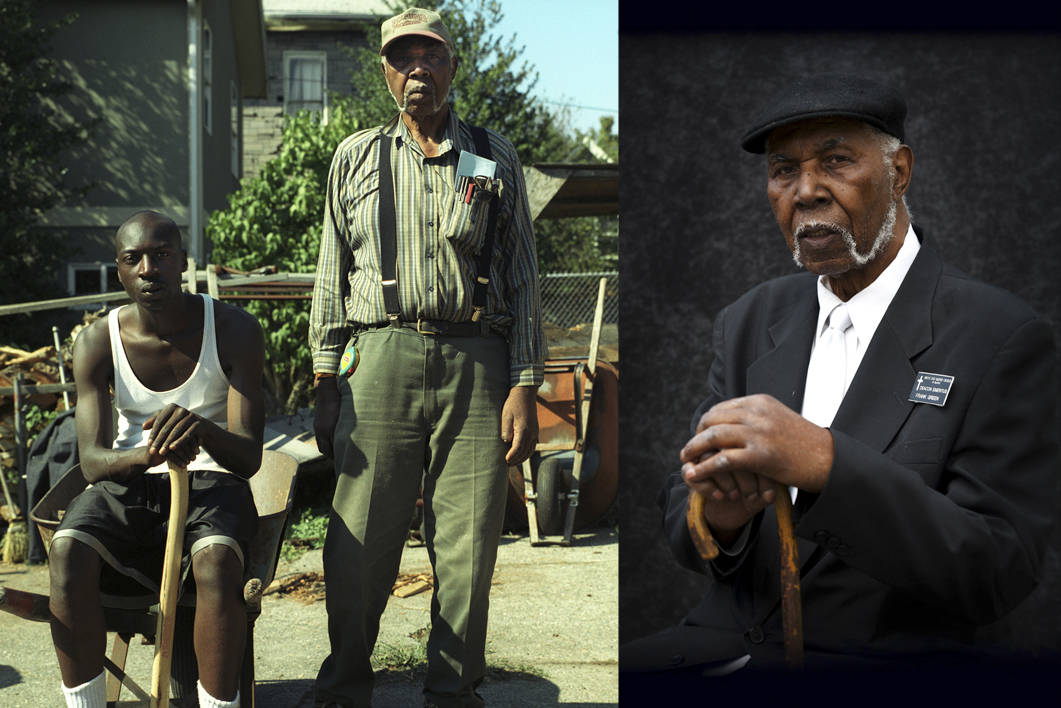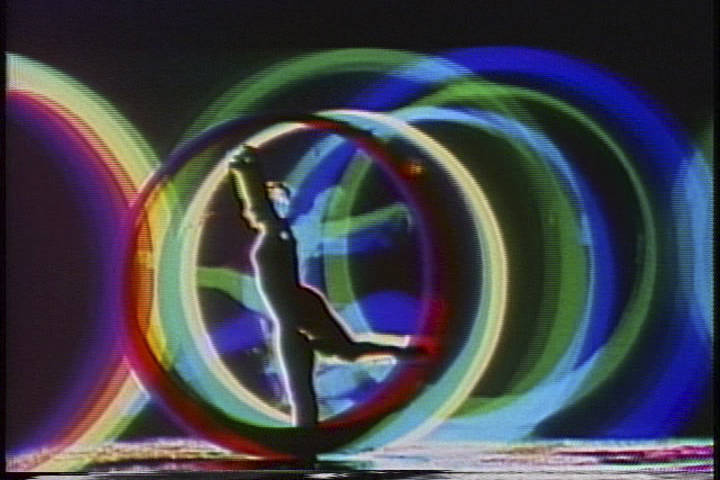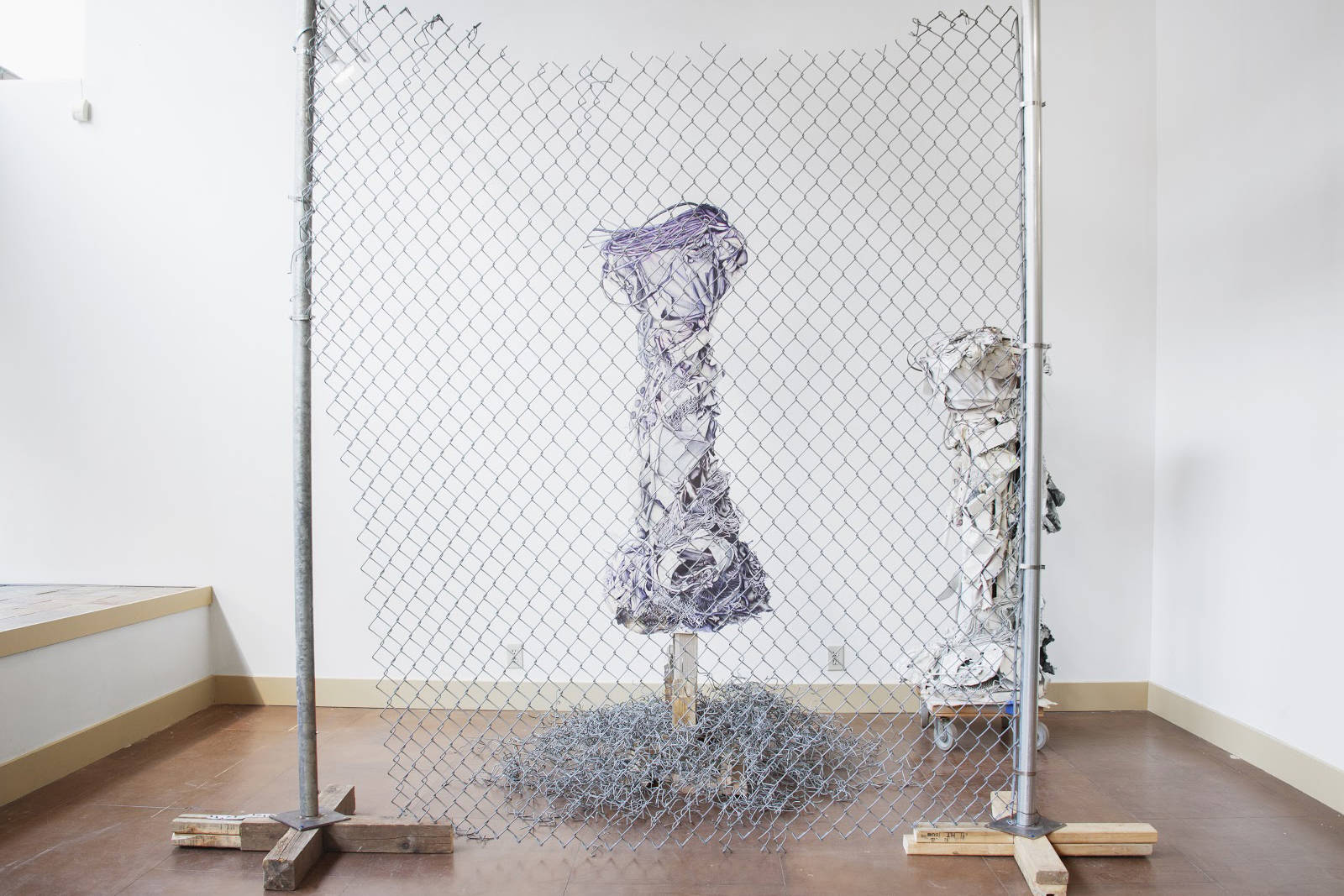You could say this story started in 2005. Inye Wokoma had purchased 913/915 24th Ave., the house originally his grandfather Franklin Joseph Green’s. The first thing Wokoma did was clean. The garage fit two cars, and both bays brimmed with belongings, the accumulated miscellany of a long life. “Touching all these things, I had stories associated with each of them. They were things that brought up feelings, objects that triggered memories about how we lived.”
What began as a chore became a pastime, became a ritual, became archival, became an exhibition. Some of the garage objects are in Wokoma’s recent show, An Elegant Utility, at the Northwest African American Museum. A set of garden tools are displayed with care in one vitrine, a stack of magazines in another. They’re worn in the way of well-used items, with satisfaction, curled pages from thumbings, tools encrusted with dirt and rust. On the walls hang photos of Wokoma’s family in different configurations, some standing outside 913/915, time elapsing fluidly between snapshots. Two photos of the house are adjacently hung: one black-and-white and the other, presumably more recent, in color, in which the house is blanketed by snow. Like a family member, the house is shown through its years, photos revealing its changes and constants. In our current city of ephemeral housing situations, this type of long-term documentation, like the markings of a family’s evolving heights on the kitchen wall, seems more and more an anachronism.
You could say this story started in 1947. That year, Frank Green purchased the house in an owner-financed agreement from a Jewish couple named Thomas and Elizabeth Grace. For the next two decades, Green proceeded to record every single payment he made in a thick ledger, prominently displayed in the show. To Wokoma, it’s a charged object. “You can look at that document and connect it to what’s happening to the community at large, around all the issues of black folks and housing. It documents the relationship between two families and the issues that force people to go into these arrangements.”
The precision and poeticism with which Wokoma hones a common object to unfurl its story is exemplified by a ring of keys. Rusted and indistinguishable, they’re hooked unceremoniously on the wall. Above them, a straightforward definition of “redlining,” “the practice of outlining poor and predominantly black neighborhoods in red on city maps, served as the basis for denying, or only offering predatory loans to African Americans by financial institutions.”
The text continues: “As a result, black homeowners lived with deteriorating homes or developed strategies for maintaining their properties through their own means.” This explains the keys, Frank Green’s, to many different doors that constituted an internal family economy “that consisted of paid work, small and large loans, rental income, and on-the-job training of transferable skills.” Below the keys is a poem-like list of home maintenance projects that Frank Green supervised:
The free-standing two-port garage in the backyard of 913 24th Ave.
The horse and carriage house converted into a two-story duplex unit in the backyard of 911 24th Ave.
Customized kitchen cabinets built from scratch 2314 E. Marion St.

Frank Green’s home maintenance keys. From “An Elegant Utility.”
The exhibit is an education on the history of segregation—not only of the Central District’s, but of racially restrictive covenants that spanned practically every neighborhood. It’s about the documentation of erased communities, and how household items can bear witness to the relationships between those who used them. It’s about how people were not only subjected to, but lived and worked and loved under, nameless policies that enclosed people into some parts of the city and barred them from others.
But if you let it, it’s an exhibit that will also complicate the stories we often tell about restrictive policies, housing discrimination, and arcs of progress toward justice. When people talk about segregation laws, they’re often remiss to acknowledge the radical systems of self-sufficiency and interdependence that emerge. These systems, for Wokoma, do not just have an impact on the material things around us—they inform our relationships to one another. Like Green’s home-maintenance operation among his family members and neighbors, these alternate labor forces were radical in the sense that they altered social structures, setting up relationships that were formerly unavailable. “The relationships are invaluable. You can’t quantify that. All of that existed as a response to segregation. The success of the Civil Rights movement, while those were huge social advances, they systematically dismantled the mechanisms and structures we had built inside the black community.”
Practices like redlining are irredeemable—that’s not up for debate for Wokoma—but he doesn’t want to negate the inventive resilience that arose from them. “Could you have had that kind of community-based interdependent value system without the oppressive social system? Hypothetically yes, people have been doing it forever. Would it be possible inside a capitalistic society? Probably not. Does that mean I want to go back? No. Hell no. And that’s the complexity of it. I’m not afraid of having those conversations.” An Elegant Utility, Northwest African American Museum, 2300 S. Massachusetts St., naamnw.org. $7. Ends July 27. Inye Wokoma in Conversation, 7 p.m. Wed., June 28.
visualarts@seattleweekly.com








